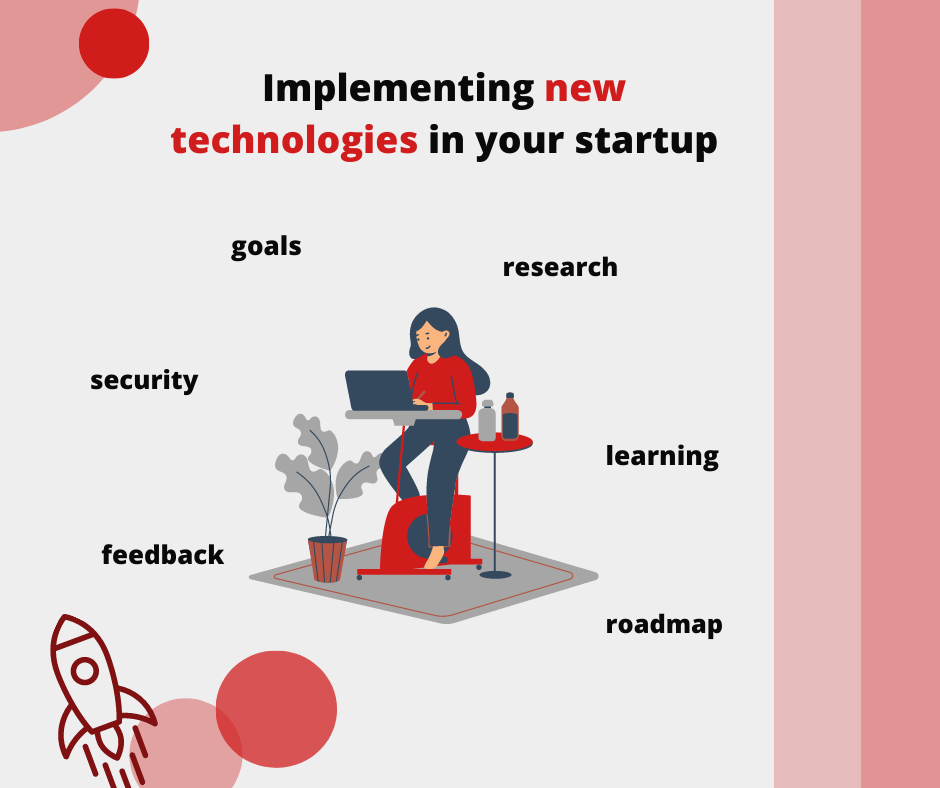Nowadays, in the fast-paced and highly competitive business landscape, startups are constantly seeking innovative solutions to gain a competitive edge. Probably, your startup is doing so too. The implementation of new technologies holds great potential for startups, enabling them to streamline operations, enhance productivity, and meet evolving customer demands. However, it is challenging.
First of all, without proper planning and strategic execution, startups can fall victim to common pitfalls that hinder progress and undermine the success of technology adoption.
In this blog post, we will explore key strategies and best practices to help startups navigate these traps and ensure the successful integration of new technologies.

Define the goals of your startup
Before embarking on any technological implementation, it is crucial to establish clear goals and objectives. Actually, it should always be your first step. Define what your startup wants to achieve through the adoption of new technologies. Is it to enhance operational efficiency, improve customer experience, or enable scalability? By outlining these objectives, you can better align your technology adoption strategy and ensure that all efforts are focused on achieving measurable outcomes.
Conduct research
Research is a fundamental step in the technology implementation process. It is essential to thoroughly evaluate potential technologies, considering factors such as scalability, compatibility with existing systems, security, and cost. Engage with industry experts, attend conferences, and seek advice from trusted advisors to gain insights into best practices and lessons learned from similar implementations. Additionally, perform a comprehensive analysis of the vendor’s track record, reputation, and customer reviews to ensure their reliability and compatibility with your startup’s needs.
Create a roadmap
Developing a roadmap and implementation plan is vital for a smooth integration of new technologies. Break down the implementation process into manageable phases, clearly defining milestones, timelines, and responsibilities. Assign a dedicated team or individual to oversee the implementation and ensure regular communication and collaboration with all stakeholders. It is essential to consider potential risks and challenges that may arise during the implementation process and devise contingency plans accordingly.
Secure adequate resources
A lack of resources and expertise can significantly hinder the successful implementation of new technologies. Assess your startup’s internal capabilities and determine if additional resources or expertise are required. This may involve hiring specialized talent, partnering with external consultants, or providing training to existing staff. Adequate budget allocation is also crucial to cover costs associated with technology acquisition, implementation, and ongoing maintenance.
Encourage employee adoption and training
The success of technology implementation largely depends on the willingness and ability of employees to embrace and effectively utilize the new tools. Invest in comprehensive training programs to educate employees about the benefits and functionalities of the technology. Foster a culture of learning and continuous improvement to encourage employees to adapt and explore new possibilities offered by the technology. Solicit feedback from employees throughout the process and address any concerns or challenges they may have, ensuring their involvement and support.
Monitor, evaluate, and adapt
Implementing new technologies is an iterative process that requires continuous monitoring, evaluation, and adaptation. Establish performance metrics aligned with your defined objectives and regularly assess the technology’s impact on your startup’s operations and goals. Collect feedback from users and stakeholders and make necessary adjustments to optimize efficiency.
Successfully implementing new technologies can be a game-changer for startups, empowering them to innovate and thrive in today’s competitive landscape. By following these strategies and best practices, startups can avoid common pitfalls and maximize the benefits of technology adoption. Remember to set clear goals, conduct thorough research, create a detailed roadmap, secure adequate resources and expertise, encourage employee adoption and training, and consistently monitor and evaluate progress.
If you want to know more about Futurum Technology, check out our LinkedIn https://www.linkedin.com/company/futurum-technology-ltd./ or our website: https://www.futurum.tech/.
